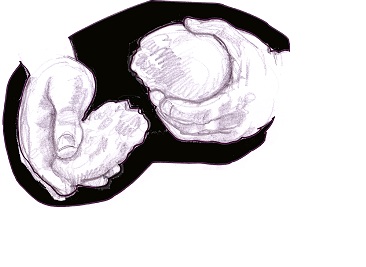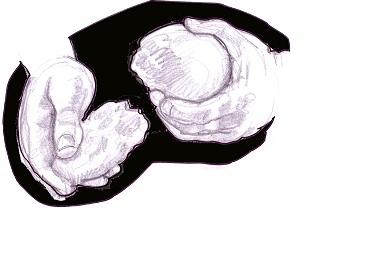

“All these things Jesus spoke to the crowds in parables” (Matt 13:34).
Jer 13:1-11; Matt 13: 31-35
Before we move on from the theme of Jesus’ parables, the Lectionary introduces portions of the Prophet Jeremiah, who was famous for some “action” parables. In today’s first reading, to illustrate Judah’s failure to keep the covenant, Jeremiah buries a loincloth in the ground, then retrieves it to show how its rotted state is like the once intimate relationship with Yahweh that had been corrupted by infidelity. He will later visit a potter’s studio to make the comparison with God as the one in charge of world history.
With such graphic imagery, Jeremiah had the difficult task of telling his own people of the coming destruction of Jerusalem. He was accused of undermining public morale, and he is imprisoned or left to die in a cistern. He even begged to be relieved of his prophetic vocation. He is called a “man of constant sorrow,” and in this foreshadows Jesus anguish when predicting the destruction of the nation. Both Jeremiah and Jesus looked beyond institutional structures to the survival of God’s promises in personal fidelity and God’s presence in the community. Worship in temples and on mountains would become worship in spirit and in truth.
Jesus’ parables reflect this interiority. The humble mustard seed will germinate and take root to give shelter for the birds; the yeast the woman “hides” in the flour will rise mysteriously to sustain the community. The parables are themselves “portable,” not requiring institutional religion because they can be carried in the heart and lived out anywhere.
In the tumult of our own times, we know change is needed but hope it will not disturb our lives or upend familiar institutions. This is not always possible, especially if corruption is systemic and embedded in social structures that perpetuate injustice. Jeremiah offered little comfort to those who hoped for continuity or painless change. What he prophesied was that God was doing something new. Hope would come with a rebirth of justice and fidelity to the covenant. And like birth, there would be pain and struggle, followed by joy.
Jesus sought to prepare his disciples for transition by giving them a path to interior renewal, parables of transformation and his own example of dying and rising as the pattern of continual conversion. The early church entered the maelstrom of historical change as violence swept away many institutional and cultural mainstays, including Jerusalem and the temple, and later imperial Rome itself, collapsing under corruption from within and invading forces from without. We live within our own political and cultural time and will not be spared upheaval and change. The Gospels counsel us to know what is essential and what is passing.
Travel light; carry the stories; love one another and break bread with one another along the way. Most of all, keep your eyes on the prize, Jesus our brother and, ultimately also the Lord of history.
Advertisement







